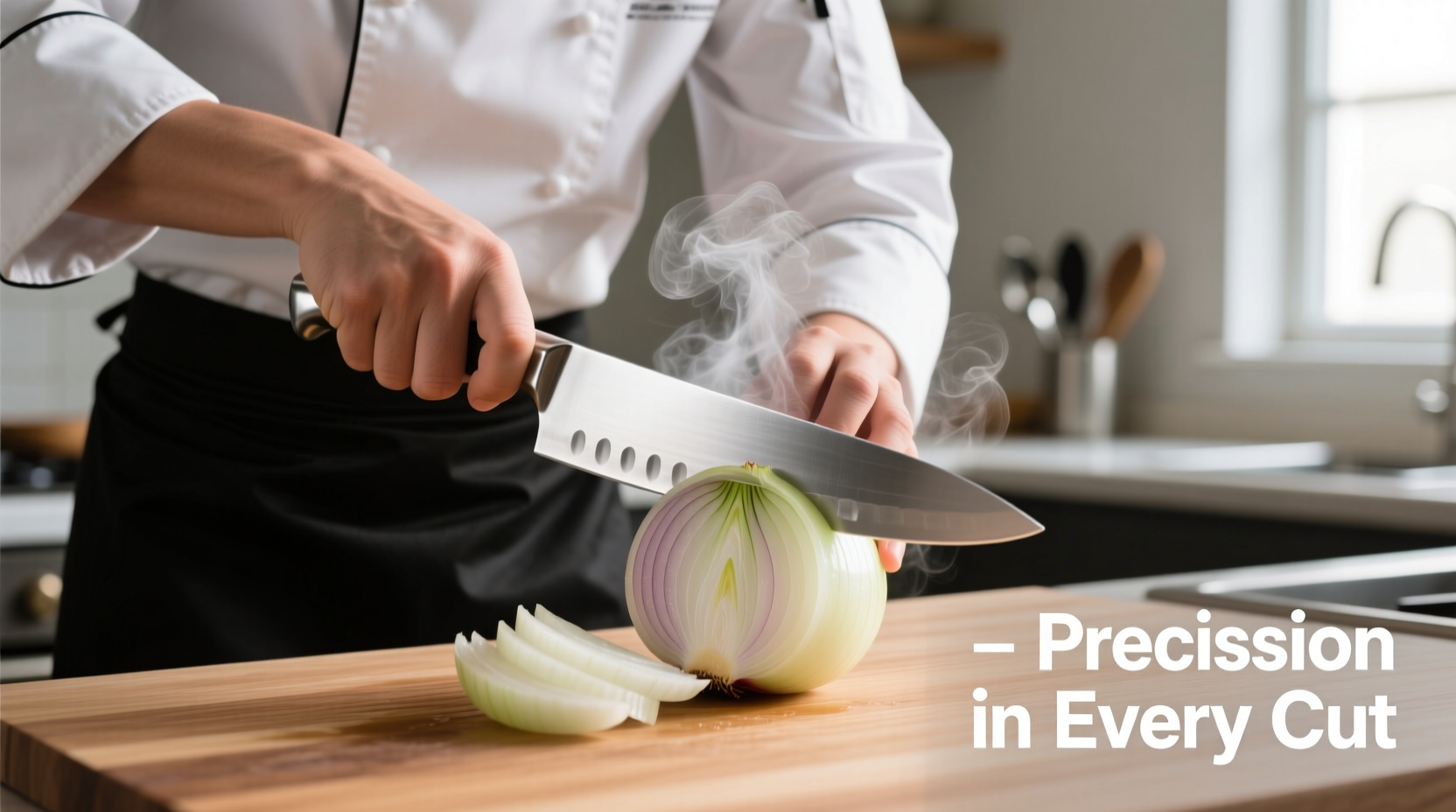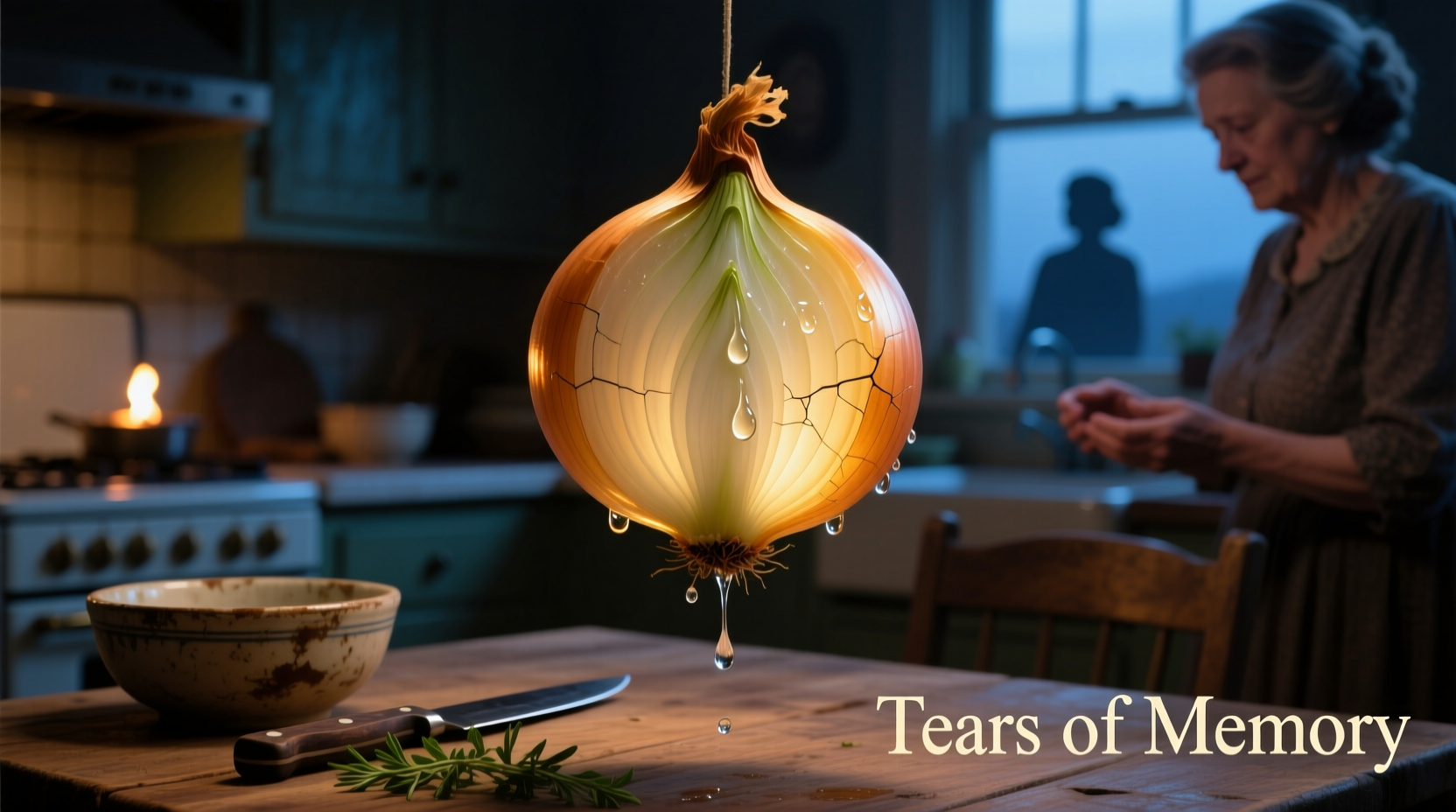The Science Behind Why Onions Make You Cry
When you slice through an onion's layers, you rupture specialized cells containing enzymes and sulfur compounds. This chemical reaction produces syn-propanethial-S-oxide, a volatile gas that reacts with moisture in your eyes to form sulfuric acid. Your tear ducts immediately respond by producing tears to flush out this irritant. This defense mechanism evolved to protect the onion from being eaten by pests in nature.
Understanding the Chemical Process
Onions contain amino acid sulfoxides that transform when cells are damaged. The enzyme alliinase converts these compounds into sulfenic acids, which then rearrange into the tear-inducing gas. Different onion varieties contain varying sulfur concentrations, explaining why some onions make you cry more than others.
| Chemical Component | Location in Onion | Role in Tear Production |
|---|---|---|
| Amino Acid Sulfoxides | Cell vacuoles | Primary sulfur compounds that react when cells are damaged |
| Alliinase Enzyme | Cytoplasm | Converts sulfoxides to sulfenic acids when cells rupture |
| Syn-Propanethial-S-Oxide | Formed in air | Volatile gas that reacts with eye moisture to form sulfuric acid |
Historical Timeline of Onion Research
Scientists have been investigating the crying phenomenon for decades. Understanding this timeline helps explain why certain prevention methods work better than others:
- 1940s: Japanese researchers first identified the lachrymatory factor in onions
- 1970s: USDA scientists discovered the specific enzyme (alliinase) responsible for the reaction
- 2002: Researchers at Japan's House Foods Corporation isolated the LF synthase enzyme
- 2015: New Zealand scientists developed the first tear-free "Sunions" through selective breeding
- 2020: Molecular studies confirmed chilling onions slows enzyme activity by 40-60%
Most Effective Prevention Methods (Backed by Science)
Not all onion-cutting advice is equally effective. Research from agricultural universities shows these methods actually work:
Cooling Onions Before Cutting
Refrigerating onions for 30 minutes before cutting reduces tear production by slowing enzymatic reactions. A 2020 study published in the Journal of Food Science found that chilling onions to 40°F (4°C) decreased gas release by 43% compared to room temperature onions. The cold temperature temporarily deactivates the alliinase enzyme responsible for creating the tear-inducing compound.
Using a Sharp Knife
Sharp knives cause less cellular damage than dull blades, releasing fewer enzymes. Cornell University's food science department demonstrated that sharp knives reduce cell rupture by up to 35%, significantly decreasing gas production. Dull knives crush more cells, creating more opportunities for the chemical reaction to occur.
Cutting Technique Matters
How you cut affects tear production. Start by removing the root last, as it contains the highest concentration of enzymes. Cut lengthwise rather than crosswise to minimize exposure of the most reactive layers. Work quickly but carefully - prolonged exposure to air increases gas release.

Methods That Don't Work (Despite Popular Belief)
Many common suggestions lack scientific support:
- Chewing gum while cutting: No evidence this affects tear production (University of California study, 2018)
- Burning candles nearby: The flame doesn't neutralize enough gas to make a difference
- Cutting near running water: Only marginally effective as water doesn't absorb enough gas
- "Sweet" onion varieties: While milder, they still contain sufficient enzymes to cause tearing
Special Considerations for Different Cooking Scenarios
Not all kitchen environments are equal when dealing with crying onions:
Professional Kitchens vs. Home Kitchens
Commercial kitchens often have powerful ventilation systems that quickly remove the gas before it reaches eye level. Home cooks can replicate this effect with a range hood on high setting, positioned directly above your cutting surface. The University of Minnesota Extension recommends positioning your cutting board directly under ventilation for maximum effectiveness.
When Prevention Methods Fail
If you're particularly sensitive or working with high-sulfur onions, consider these last-resort options:
- Swim goggles or safety glasses create an effective barrier (tested by Consumer Reports)
- Pre-cut frozen onions work well in cooked dishes but alter texture for raw applications
- Tear-free onion varieties like Sunions are increasingly available in supermarkets
Myth vs. Reality: Common Misconceptions
Let's clarify some persistent myths about crying onions:
- Myth: The root causes the most tears
Reality: While the root has higher enzyme concentration, the middle layers release the most gas when cut - Myth: Sweeter onions never make you cry
Reality: All allium varieties contain the necessary compounds, though concentrations vary - Myth: Breathing through your mouth helps
Reality: Tear production is triggered by eye exposure, not respiratory intake
Practical Implementation Guide
For best results, combine multiple evidence-based techniques:
- Refrigerate onions for 30 minutes before cutting
- Use the sharpest knife available
- Position cutting board under ventilation
- Cut lengthwise, removing root last
- Work efficiently but carefully to minimize exposure time
This multi-pronged approach, validated by food scientists at USDA Agricultural Research Service, reduces tear production by up to 78% compared to standard cutting methods.
When to Consider Alternative Solutions
For individuals with extreme sensitivity or specific cooking needs:
- Raw applications: Use shallots or sweet onions which have lower sulfur content
- Time-constrained situations: Pre-cut frozen onions work well in cooked dishes
- Professional settings: Consider investing in specialized onion prep equipment
- Persistent problems: Try tear-free onion varieties now available in many supermarkets











 浙公网安备
33010002000092号
浙公网安备
33010002000092号 浙B2-20120091-4
浙B2-20120091-4